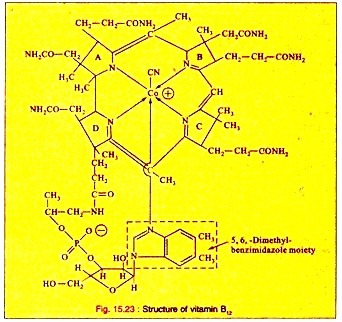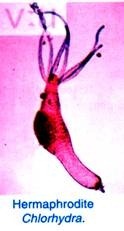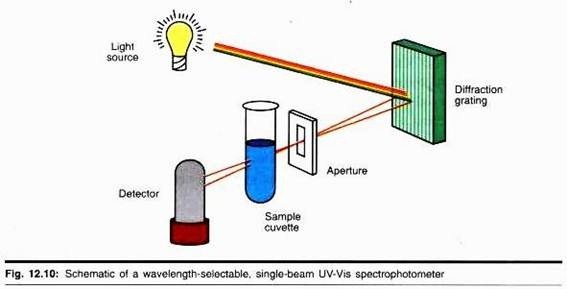The following points highlight the two main steps of mitosis. The steps are: 1. Karyokinesis 2. Cytokinesis.
Step # 1. Karyokinesis:
Karyokinesis (Gk. karyon- nucleus, kinesis- movement) is also called indirect nuclear division because the nucleus passes through a complicated sequence of events before forming two daughter nuclei.
Though the process is continuous one without any pauses, it has been divided into four phases or stages for the sake of convenience depending upon the completion or beginning of a specific event. They are prophase, metaphase, anaphase and telophase. A fifth stage of pro-metaphase is recognised by some workers.
i. Prophase (Gk. pro- first, phases- stage):
It is often studied in three: sub stages— early, middle and late. In early prophase, the nucleus becomes spheroidal. Viscosity of cytoplasm increases. The indistinct and intertwined DNA molecules condense to form elongated chromosomes.
Therefore, the chromatin reticulum disappears. The shortening and thickening of chromosome fibres occur due to two reasons:
(i) Coming together of scaffolding or axial proteins,
(ii) Coiling or spiralisation of chromatin fibres (lateral loops). It is assisted by proteins condensins.
The elongated chromosomes may show overlapping. Their ends are not visible. Therefore, the chromosomes appear like a ball of wool. It is also called spireme stage. In the beginning of prophase, animal cells have two centrosomes or centriole pairs close together.
The two begin to shift towards the opposite sides. Both the centriole pairs radiate out fine micro tubular fibrils called astral rays. Each group of astral rays along with its centriole pair is called aster. In an aster, the micro tubular astral rays are not connected to centrioles but to pericentriolar satellites.
In early prophase, chromosomes are evenly distributed inside nucleus. In middle prophase they shift towards the periphery or nuclear envelope so as to leave a clear central area.
Simultaneously the chromosomes shorten and thicken further to assume characteristic shape and size. The size of chromosomes is reduced to some 1/25 of their size in early prophase. Shortening of chromosomes is a must for their equitable distribution later during anaphase.
Each chromosome appears to consist of two longitudinal threads called chromatids. The two chromatids, also called sister chromatids, are attached to each other by means of a narrow point called centromere. Nucleolus or nucleoli are found attached to one or more chromosomes. They, however, appear smaller as compared to those of interphase nucleus.
In late prophase fine fibres start appearing around the nucleus. The nucleolus or nucleoli degenerate completely. By this time the two asters (centriole pairs and their astral rays) come to lie in the area of future spindle poles. Spindle poles are organised without asters in plant cells. The two spindle poles begin to get connected by fine fibres.
Prometaphase (Gk. pro- before, meta- second, phasis- stage). Nuclear envelope degenerates. Differentiation between cytoplasm and nucleoplasm disappears.
Endoplasmic reticulum and Golgi complex dis-organise Spindle apparatus is fully organised. It is spindle-shaped, colourless or achromatic bipolar fibrous body. Spindle apparatus (mitotic apparatus) consists of numerous fine fibres. Each fibre is actually made up of 4-20 microtubules.
The spindle fibres converge towards the two ends called poles. In animal cells the poles are formed by asters. Since there are two asters, the spindle of animal cell is called amphiaster (Gk. amphi- both, aster- star). In contrast, the spindle of plant cells is called anastral (Gk. аn- not, aster— star). Anastral spindle is also called acentric while amphiaster is called centric spindle.
The spindle apparatus has the maximum diameter in the middle. The area is called equator. The fibres of the spindle, have negative end near the pole and positive end near the middle. Some fibres overlap in the middle, get connected by bipolar molecular motors and form apparent continuous fibres.
Others are discontinuous (which radiate out from one pole but do not reach the other). Chemically the spindle consists of 90-95% proteins (mostly tubulin rich in sulphur containing amino acids with traces of actin and myosin), 3.5-5% RNA and traces of lipids and other substances.
Mitotic division in which nuclear envelope degenerates during organisation of spindle is called extra-nuclear mitosis or eumitosis. In many protists, fungi and algae nuclear envelope does not degenerate. Spindle is formed inside the nucleus and mitosis occurs there.
It is called pre-mitosis or intra-nuclear mitosis. It may be centric or acentric. With the dissolution of nuclear envelope, the central part of the cell comes to have a clear fluid area. Chromosomes move freely in this area.
ii. Metaphase (Gk. meta- after or second, phasis- stage):
Discontinuous fibres coming from the two spindle poles get connected to the two centromere surfaces or kinetochores of each chromosome by means of corona having molecular motors. They are called kinetochore fibres or chromosome fibres (or tractile fibrils).
Each chromosome is attached to both the spindle poles by distinct chromosome fibres, one for each chromatid. Chromosome fibres now tighten. This brings the chromosomes on the equator of the spindle. The phenomenon of bringing the chromosomes on the equator of the spindle is called congression.
On the equator the small chromosomes come to lie towards the interior while the larger ones are arranged towards the periphery. The centromeres of all the chromosomes lie on the equator while the limbs are placed variously according to their size and spatial arrangement.
The centromeres of all the chromosomes form an apparent plate called metaphasic or equatorial plate (actually they are present in the form of a circle). Metaphase is the best time to count the number and study the morphology of chromosomes.
iii. Anaphase (Gk. ana- up, phasis- stage):
It has two sub stages, A and B.
(a) Anaphase A:
The centromere of each chromosome divides into two, so that each chromatid comes to have its own centromere. The two chromatids now start repelling each other and separate completely to become daughter chromosomes. The daughter or new chromosomes move towards the poles of spindle along the path of their chromosome fibres or tractile fibrils.
They may remain connected to each other by inter-zonal fibres. Simultaneously, the spindle elongates. In anaphasic movement of chromosomes, the centromeres lead the path while the limbs trail behind. As a result the anaphasic chromosomes appear V, L-, J- and I-shaped. The shapes are formed respectively in metacentric, sub-metacentric, acrocentric and telocentric chromosomes.
(b) Anaphase B:
At the end of anaphase two groups of chromosomes are formed, one at each pole of the spindle. The spindle elongates. Most spindle fibres disappear from near the poles but remain intact near the middle. The number and type of chromosomes at each pole is the same as present in the parent nucleus.
Causes of Anaphasic Movement:
(i) Each chromosome fibre or tractile fibril consists of microtubules. The spindle is also formed of microtubules. The chromosome may glide over the spindle fibres by (a) molecular motors or (b) under force developed at the poles,
(ii) Anaphasic movements are caused by contraction of chromosomes fibres,
(iii) Formation and expansion of inter zonal fibres,
(iv) Dissolution of microtubules of chromosome fibres at their ends assisted by molecular motors.
iv. Telophase (Gk. telos- end, phasis- stage):
The stage is reverse of prophase. During this phase the cytoplasmic viscosity decreases. The two chromosome groups (formed at the end of anaphase) reorganize themselves into nuclei. The chromosomes elongate and overlap one another to form chromatin.
The nucleolar organizer regions of satellite chromosomes produce nucleoli which may or may not fuse. Nucleoplasm collects in the area of chromatin. A nuclear envelope appears on its outside from either pieces of older nuclear envelope or endoplasmic reticulum. In this way two daughter nuclei are formed at the poles of the spindle.
In the telophase the spindle fibres disappear around the poles. Golgi complex and endoplasmic reticulum are reformed. In animal cells the astral rays are also withdrawn. Rest of the spindle fibres persist during the cell plate method of cytokinesis but disappear where cytokinesis takes place by cleavage or constriction.
Step # 2. Cytokinesis (D-Phase):
Cytokinesis (Gk. kytos- hollow or cell, kinesis- movement) is the division of protoplast of a cell into two daughter cells after the nuclear division or karyokinesis, so that each daughter cell comes to have its own nucleus. Cell organelles (mitochondria, plastids, Golgi bodies, lysosomes, endoplasmic reticulum, ribosomes) are also distributed between the two daughter cells.
Mitochondria and plastids undergo division by cleavage or fission. Details of replication of other organelles are not known.
At times, cytokinesis does not follow karyokinesis. It produces multinucleate condition known as coenocyte or syncytium. Normally, cytokinesis starts towards the middle anaphase and is completed simultaneously with the telophase. Cytokinesis is different in animal and plant cells.
(a) Animal Cytokinesis:
The central equatorial part of spindle gets changed into dense fibrous and vesicular structure called mid-body. Simultaneously, microfilaments collect in the middle region of the cell below the cell membrane. They induce the cell membrane to invaginate. The furrow deepens centripetally and cleaves the cell into two daughters, each having a daughter nucleus. The method is known as cleavage cytokinesis.
(b) Plant Cytokinesis:
Plant cytokinesis is different from animal cytokinesis due to presence of a solid cell wall on the outside. It takes place by two methods, cleavage and cell plate.
i. Cleavage Method:
It takes place usually in some lower plants. Cytoplasm undergoes centripetal constriction in the middle to form two daughter protoplasts, each having a single nucleus. In the furrow between the two protoplasts, pectin hemicellulose and micro fibrils of cellulose are deposited to form a double wall. Wall development is centripetal like the cytoplasmic cleavage.
ii. Cell Plate Method (Fig. 10.9):
It is a common method of cytokinesis in plant cells. In his case the spindle persists for some time. It is known as phragmoplast.
Small vesicles produced by Golgi apparatus collect at the equator of the phragmoplast. The membrane of the vesicles fuse to form two sheets which enclose a matrix or film. Soon the film becomes solidified to form cell plate or middle lamella.
It grows centrifugally and comes in contact with lateral walls of parent cell. With the formation of the cell plate the spindle or phragmoplast disappears. The daughter protoplasts deposit cellulose, hemicellulose and pectin on either side of the cell plate. They form the primary wall.





